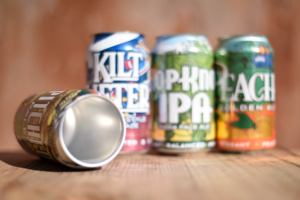It’s Beer Fact Friday again, and on the heels of Beer Can Appreciation Day (which was January 24, if you missed it), we’d like to talk about cans.
The first beer sold in cans was Krueger’s Finest Beer, made by the Gottfried Krueger Brewing Company in Newark, New Jersey. Those cans hit shelves in 1933, and it didn’t take long for other breweries to jump on board. By 1969, canned beers were outselling bottled beers in the U.S.
There are plenty of good reasons for that shift. Unlike bottles, cans are impermeable to light, which means the UV rays that cause skunky aromas to appear in beer are blocked and sent into the stands like a weak basketball shot. Cans are also cheaper to transport, since they’re lighter and stack better than bottles.
The main argument against cans these days seems to be that they can make beer taste like metal. But unless you’re drinking directly from the can and not pouring the beer into a glass like you should, any metallic flavors you’re picking up are most likely a figment of your imagination. That’s because all aluminum cans used by brewers (and energy drink- and soda-makers) are lined with a plastic force field: a layer of epoxy that ensures the liquid inside never touches the metal.
In 2018, cans made up 30% of the beer we sold in package (cans and bottles) and 16% of our total volume (cans, bottles and kegs). Arizona beer drinkers still prefer their beer in bottles on the whole, but that percentage grows a little bit more every year.
Got a topic you’d like us to cover in a future #beerfactfriday? Let us know in the comments.
Share:Original Source Here

